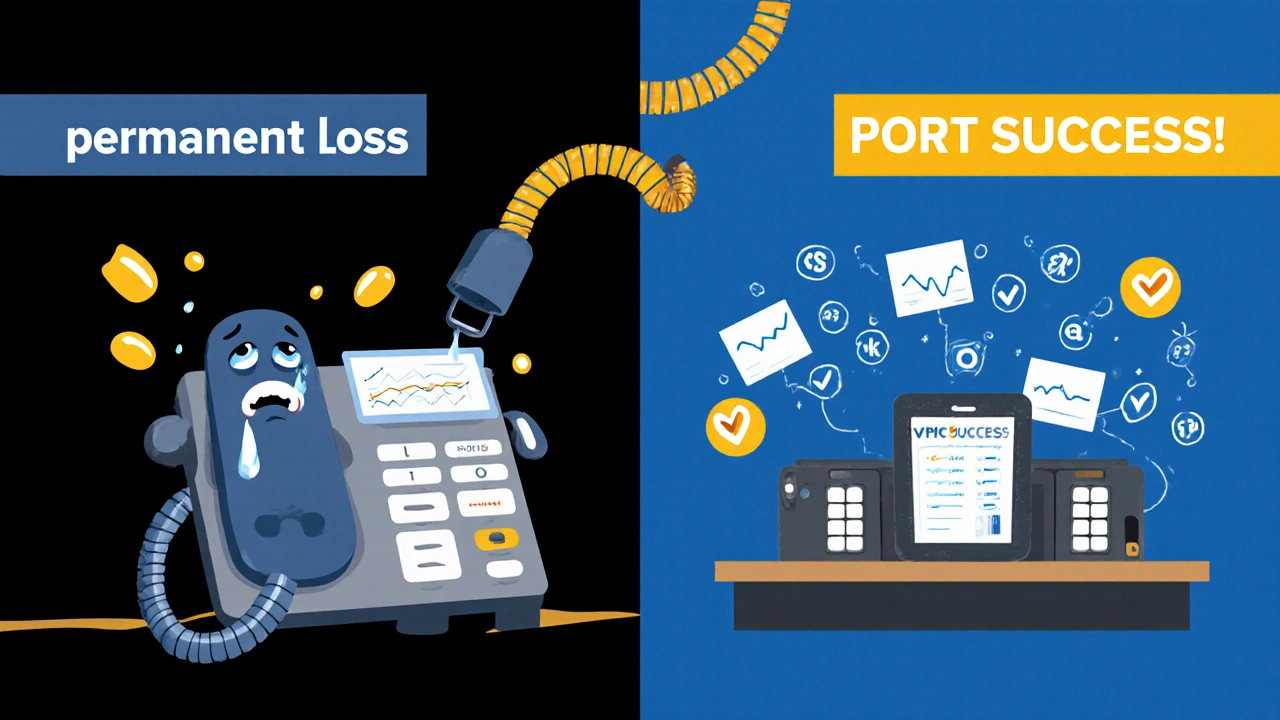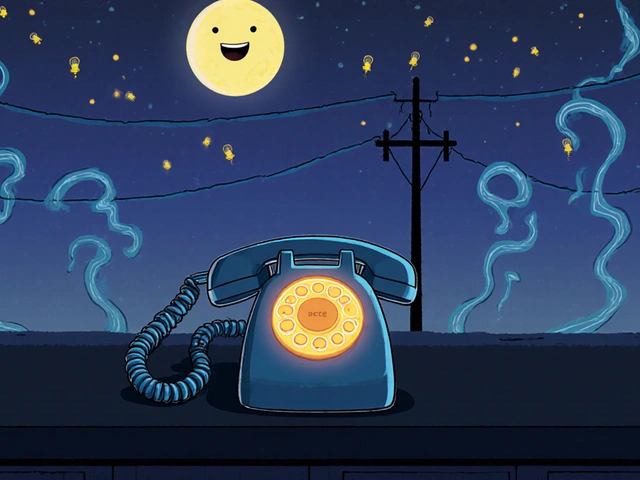Porting a vanity or toll-free number to a VoIP system isn’t like moving a regular phone number. It’s not just switching providers-it’s navigating a complex web of databases, verification rules, and legacy systems that can make or break your customer communication. If you’re a business with an 800, 888, or 877 number that customers know by heart, losing it during a move to VoIP isn’t an option. But getting it transferred smoothly? That takes more than clicking a button. Here’s what actually happens when you port a toll-free number today-and how to make sure you don’t get stuck for weeks or lose your number forever.
Why Porting Toll-Free Numbers Is Different
Local numbers move through the LNP (Local Number Portability) system, which is mostly automated and handled by regional carriers. Toll-free numbers? They live in the SMS/800 database, managed by Somos under FCC oversight. This isn’t just another database-it’s a nationwide system that links over 68 million toll-free numbers to their Responsible Organizations (RespOrgs). Each number has a RespOrg, which acts like its legal guardian. When you want to port, you’re not just asking your current provider to release it-you’re asking the RespOrg to hand it off to a new one. And that’s where things get messy.Unlike local numbers, toll-free ports require exact matches between your Letter of Authorization (LOA), your billing statement, and the account name on file. Even a typo in your address or a mismatched signature can trigger a rejection. According to Phone.com’s internal data, 47% of failed toll-free port attempts happen because of RespOrg mismatches or document errors. That’s nearly half of all attempts. And if you cancel your old service before the port completes? Your number is gone. Permanently.
What Documents You Actually Need
You can’t just send a signed form and hope for the best. The FCC and Somos require three exact documents:- Letter of Authorization (LOA): Must be signed by the account holder exactly as their name appears on the bill. Electronic LOAs are now standard-most providers use secure portals. Handwritten signatures are still accepted, but they must match the billing name.
- Recent phone bill: Must be no older than 30 days. It must show your full legal name, billing address, and the exact toll-free number you’re porting. Screenshots of online bills are fine, but they must be clear and include the provider’s logo and account details.
- Account number: This is the internal number assigned by your current provider, not your phone number. It’s usually listed on the bill or in your online account. If you can’t find it, call your provider and ask for the “RespOrg account ID.”
Here’s the kicker: the billing address on your bill must match the address you enter in the LOA. No “c/o,” no abbreviations, no PO boxes unless they’re officially listed. OnSIP found that 73% of delays happen because of address mismatches. One business lost three weeks because they used “123 Main St.” on the LOA but the bill said “123 Main Street.”
How Long Does It Really Take?
Timelines vary wildly. You’ll hear everything from 2 days to 10 days. Here’s why:- 2-3 business days: Unitel Voice and Grasshopper offer fast-track processing for clean submissions. They use automated document verification and have direct API access to the SMS/800 database.
- 5-7 business days: The industry average. Providers like RingCentral and Vonage typically take this long unless there’s a hiccup.
- 7-10 business days: Common with older providers or if your documents need manual review. If you submit on a Friday, expect a 40% delay-most RespOrgs don’t process requests over weekends.
Vanity toll-free numbers (like 1-800-FLOWERS) often port faster-sometimes in just 3 days-because they’re more valuable and handled with priority. But if your number is tied to a rural carrier or a legacy system, it could take longer-or fail entirely. Emitrr’s technical blog reports that 12% of toll-free numbers from small, regional carriers can’t be ported at all due to outdated database integrations.

Who Charges What? The Hidden Costs
The FCC caps porting fees at $5.50 per number. But providers can still charge you indirectly. Here’s the real pricing landscape:- Grasshopper: Free porting for both local and toll-free numbers. No hidden fees.
- Vonage, RingCentral, Nextiva: Charge $10-$15 per number. Often billed as a “porting service fee.”
- OnSIP, Phone.com: No direct fee, but they may require you to pay for a temporary number during transition.
Some providers offer free porting as a promotional perk. If you’re switching to a new VoIP system, ask upfront: “Is toll-free porting included?” Don’t assume it is. One company paid $180 to port 12 numbers to Vonage-only to find out later that Grasshopper would’ve done it for free.
How to Avoid the Most Common Mistakes
Most failures aren’t technical-they’re human. Here’s what goes wrong, and how to fix it:- Mismatched names or addresses: Copy and paste your billing name and address directly from your latest statement into the LOA. Don’t retype.
- Expired bill: Use a bill from the last 30 days. If yours is older, request a new one from your current provider.
- Signing the LOA too early: Don’t sign until you’ve confirmed all details. Once signed, you can’t change anything without restarting the process.
- Canceling your old service: Never turn off your current line until you see the number working on the new system. Even one hour of downtime can cause permanent loss.
- Submitting on weekends: RespOrgs process requests Monday-Friday. Submit on a Tuesday for the fastest turnaround.
Pro tip: Use your new provider’s portal to upload documents. Avoid emailing PDFs. Systems like Phone.com’s automated verification reduce errors by 52% compared to manual review.
What Happens After You Submit
Once you hit submit, your new provider sends the request to the SMS/800 database. The current RespOrg has 24-48 hours to approve or reject it. If approved, the number is flagged for transfer. During this time, your service stays active. You’ll get a notification when the port is scheduled-usually within 2-5 days.On the day of the port, there’s a brief window-usually under 15 minutes-where calls may be routed to the new system. If you’re using call forwarding, voicemail, or SMS, test them immediately after the notification. A successful port means:
- Incoming calls ring on your new VoIP system
- Voicemail greetings play correctly
- SMS messages arrive in your app or dashboard
- Call analytics show incoming traffic
If any of these fail, contact your new provider’s support team right away. Most issues can be fixed within hours if caught early.

Who Should Port Their Toll-Free Number?
Porting makes sense if you:- Use your toll-free number for customer service, sales, or support
- Want call analytics, IVR menus, or integration with CRM tools
- Are tired of high monthly fees from legacy carriers
- Need mobile app access to your business line
It’s not worth it if:
- You have unresolved billing disputes with your current provider
- Your number is from a small rural carrier with no RespOrg integration
- You’re planning to shut down your business in the next 30 days
Enterprise customers with 500+ employees are the biggest adopters-42% port to VoIP for advanced call routing and reporting, according to Forrester. But even small businesses with one or two toll-free lines benefit from lower costs and better features.
What’s Changing in 2025?
The industry is moving fast. Somos rolled out new security rules in late 2023 requiring biometric verification for high-risk porting requests-think multiple failed attempts or numbers with high fraud history. Verizon Business is testing AI that auto-verifies LOAs and bills, cutting processing time by 63% in pilot tests.By 2025, most experts predict toll-free porting will take just 1-2 business days. Gartner forecasts that 78% of providers will use automated systems by then. The FCC also expects toll-free number usage to grow 4.7% annually through 2028, despite security concerns. The bottom line: porting is getting easier, but only if you do it right.
Final Checklist Before You Start
Before you submit your porting request, run through this:- ✅ Confirm your toll-free number is active and not suspended
- ✅ Get a bill from your current provider dated within the last 30 days
- ✅ Match your LOA name and address exactly to the bill
- ✅ Find your RespOrg account number (ask your provider if unsure)
- ✅ Do NOT cancel your current service
- ✅ Submit your request on a Monday or Tuesday
- ✅ Test your new system immediately after porting completes
If you follow this, your port will likely complete without a hitch. And you’ll keep the number your customers trust-without the headaches.
Can I port a vanity toll-free number like 1-800-FLowers to VoIP?
Yes, vanity toll-free numbers can be ported to VoIP systems, and they often transfer faster than standard numbers because they’re considered high-value assets. The process is the same: you need a signed LOA, a recent bill, and the correct account number. Many providers prioritize vanity numbers due to their brand recognition value, and some can complete the port in as little as 3 business days if all documents are accurate.
What happens if my porting request is rejected?
If your request is rejected, you’ll get a notification from your new provider with the reason-usually a mismatch in your LOA, billing address, or account number. Don’t resubmit the same documents. Correct the error, get a new bill if needed, and reapply. Phone.com reports that 68% of failed attempts are fixed on the second try. Keep your old service active while you fix it.
Do I need to notify my customers about the port?
No, you don’t need to notify customers. The port happens silently on the carrier side. Calls will route to your new VoIP system without interruption. However, it’s smart to test your system thoroughly after the port completes to ensure voicemail, call forwarding, and SMS work as expected. If something fails, fix it quickly-but your customers won’t notice the switch unless you tell them.
Can I port a toll-free number from a rural carrier?
It’s possible, but not guaranteed. Some rural carriers still use outdated systems that don’t integrate with the SMS/800 database. Emitrr’s research shows 12% of toll-free numbers from small providers can’t be ported at all. If your current provider is a small regional carrier, contact them first and ask if they’re registered with a RespOrg. If they’re not, porting won’t work.
Is there a fee to port a toll-free number?
The FCC limits porting fees to $5.50 per number, but many VoIP providers charge $10-$15 as a service fee. Grasshopper is an exception-they offer free porting. Always ask upfront. Some providers include it in their monthly plan; others don’t. Never pay more than $15 unless you’re getting premium support or expedited service.
What if I lose my number during the port?
If you cancel your old service before the port completes, the number is permanently lost. The system doesn’t hold it for you. That’s why every provider stresses: keep your current service active until you confirm the new one works. If you lose it accidentally, contact your new provider immediately. In rare cases, they may be able to recover it if the port is still in progress. But once it’s fully transferred and your old line is disconnected, recovery is nearly impossible.









Write a comment